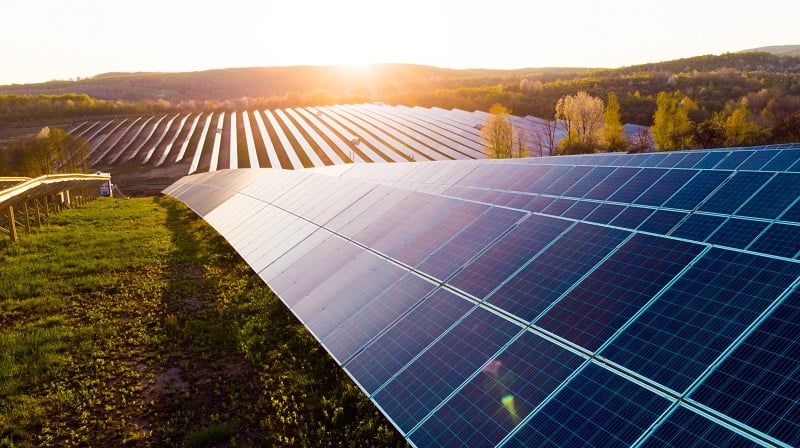
Callum Provan
Content Strategist
The International Energy Agency (IEA) drew comparisons to the 1970s oil crisis as it released its World Energy Outlook 2023. There were also encouraging trends suggesting a predicted peak in greenhouse gas emissions in 2025.
“It is difficult to say that oil and gas represent safe choices for consumers,” said Dr Fatih Birol, the IEA’s Executive Director, making clear that new concerns add to the compounding challenge of climate change, with 2023 set to be “the hottest year in history.”
Under current policies, the world could "peak" its greenhouse gas emissions in 2025.
The report was released on 25 October, a month earlier than usual to provide world leaders with the data ahead of COP28. Reasons to be optimistic include the projection that under current policies the world could "peak" its greenhouse gas emissions in 2025. This is driven primarily by rapid advancements in electric vehicle adoption, renewable electricity generation and renewables investment.
That said, Dr Birol stressed that this does not mean that the world is on track for its climate targets. Current policies indicate a plateau in emissions after they peak in 2025 rather than the rapid decline required. This implies a 2.4°C pathway, well over the 1.5°C by 2050 goal set at the Paris Agreement.
The IEA report also outlines five criteria for world leaders attending COP28 - ‘five pillars to keep 1.5°C alive.’ It is no accident that three of these five pillars feature in the UAE COP 28 Presidency’s energy policy ambitions for the upcoming conference.
#WEO23 offers 5 pillars for #COP28
— International Energy Agency (@IEA) November 1, 2023
1️⃣ Triple renewable capacity
2️⃣ Double energy efficiency progress
3️⃣ Cut methane from fossil fuels by 75%
4️⃣ Boost clean energy investment in emerging economies
5️⃣ Ensure an orderly decline in fossil fuel use
More: https://t.co/dWSKjpNDTT pic.twitter.com/MKhKQHVs8W
"Clearly the UAE has been leaning heavily on the IEA's analysis, which should be seen as positive for climate ambition,” observed Michael Button, IIGCC’s Senior Policy Manager:
“However, while picking up the IEA's 2030 targets for tripling renewables, doubling energy intensity improvement and cutting fossil fuel methane, the UAE has not endorsed reducing fossil fuel demand by 25% by the end of the decade. This reflects both its own interests in fossil fuel production and how divisive the issue is between countries more widely."
Addition to substitution
The encouraging trends identified in this year’s report have all occurred under existing government policies, implying that an uptick in policy ambition could strengthen them further.
Clean energy now accounts for 30% of total electricity generation, Ms Cozzi said, with this figure expected to rise to 50% in 2030. This, together with other technologies and nuclear will “reduce the share of fossil fuels below 50% in the 2030s.”
In transportation, the rapid growth of electric vehicles (EVs) means that one in five cars sold in 2023 is now electric. By 2030 this number is expected to rise to almost every second car sold.
“This will see a shift from addition to substitution, with more EVs and less conventional cars on our streets” explained Laura Cozzi, IEA Director of Sustainability, Technology and Outlooks.
The Outlook also identifies that solar and wind are increasingly supporting electricity generation. Clean energy now accounts for 30% of total electricity generation, Ms Cozzi said, with this figure expected to rise to 50% in 2030.
This, together with other technologies and nuclear will “reduce the share of fossil fuels below 50% in the 2030s.”
Underpinning this growth is an increase in clean energy investment. Investment in offshore wind is expected to triple by 2030, compared to today’s levels, overtaking investment in gas and coal-fired plants. Meanwhile, the solar industry is now “one-quarter the size of the global car market and set to double.”
This underpins the IEA’s prediction of a peak in world emissions in 2025. However, Ms Cozzi cautioned that this will not equal a cooling in global temperatures - 2023 might even be our coolest year this century.
“The only way to stop rising temperatures is to get to net zero emissions.”
Common challenges
The IEA’s reference to 1970s oil shocks reflects its origins. It was founded in 1974 to ensure the security of oil supplies after an embargo by major producers pushed prices up as much as 300% – a visible ‘punishment’ for the West’s support of Israel in the Yom Kippur War.
A new wave of Liquid Natural Gas supply from the USA and UAE will also ease supply and price concerns, as well as reduce Russia’s share of the market.
Tim Gould, the IEA’s Chief Energy Economist explained that these shocks led to significant changes, most notably in a more diversified energy mix and vastly improved efficiency in its use. Comparing then and now, he identified three key themes that are top of mind for the IEA:
“The enduring importance of energy security; a shift in the global energy mix which means we now have a much larger range of competitive energy options; and that it will take a much larger range of countries to solve our common challenges.”
A new wave of Liquid Natural Gas supply from the USA and UAE will also ease supply and price concerns, as well as reduce Russia’s share of the market, the climate expert said.
As ever, the World Energy Outlook offers a comprehensive analysis of the world’s energy supply chain today. Now, eyes turn to COP28, with the ‘five pillars to keep 1.5°C alive’. The question of whether they will feature in the final outcome agreed in Dubai is top of mind for most.
If you’d like to take part in our working groups and be the first to see our policy insights and analysis, why not contact us today to find out more about becoming a part of IIGCC.